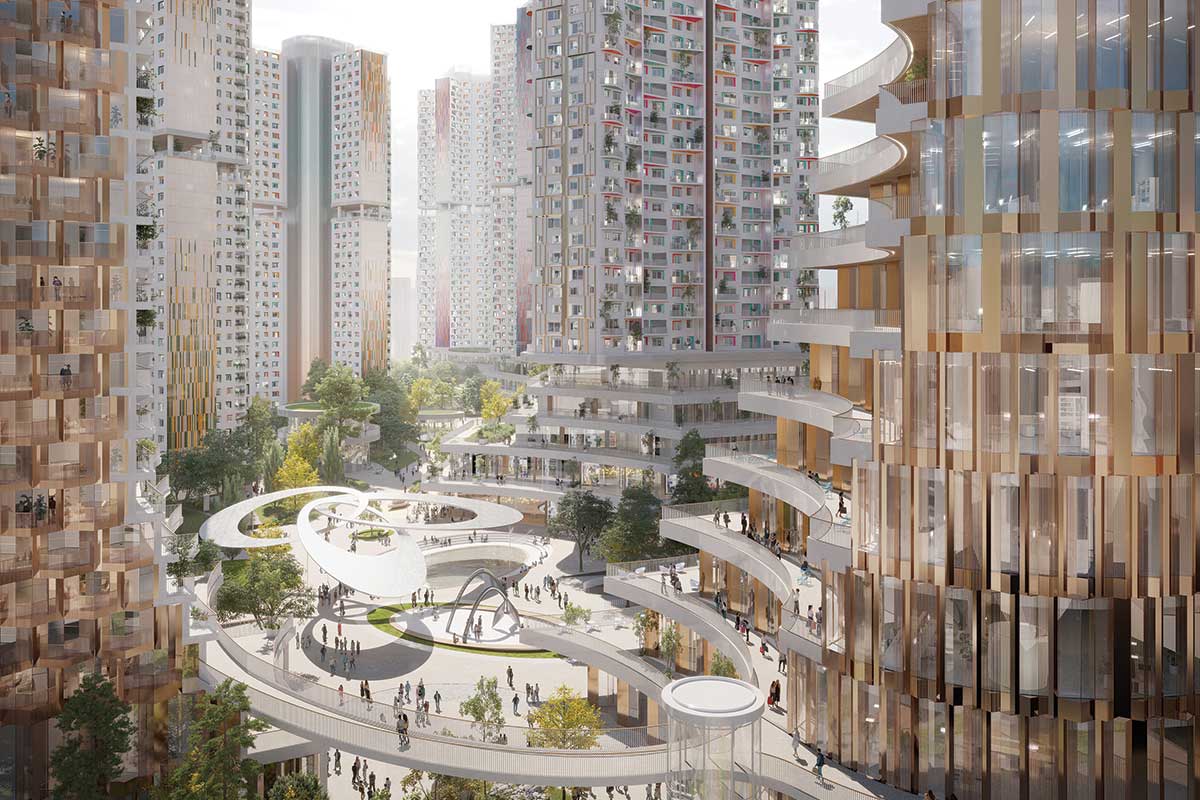
Fact File
Project: H1, Kwangwoon University Station Area Development
Client: Hyundai Development Company
Location: Seoul, South Korea
Building surface: 504.000m2
Building site: 78.000 m2
Architect: UNStudio
Consultant: UNSense
Local Architect: Kunwon Architects
Landscape Architect: Lodewijk Baljon
Visualisation: WAX & Virgin Lemon
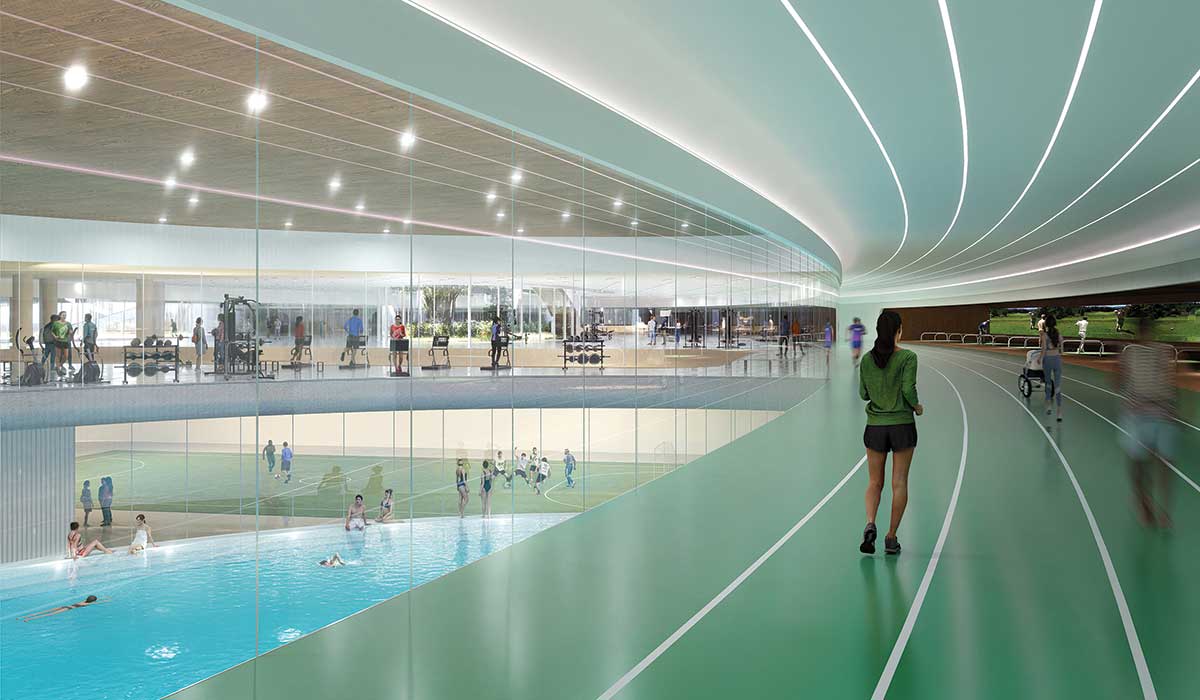
Project H1 involves the transformation of an existing industrial site and railway area into a 504.000m2 neighbourhood. Alongside the inclusion of a wide variety of layered private, semi-public, and public programs, UNStudio collaborated with the consultancy arm of UNSense to propose a plan for the integration of tailored, on-demand digital packages for the residents.
This added tech layer is designed to complement the physical urban plan and create a fully digitally serviced neighbourhood - thus going beyond the usual efficiency focus of Smart City models to enhance the daily lives of the residents. This digital infrastructure can also be used for the management of energy production and consumption and of communal spaces, such as those cultivated for local food production schemes.
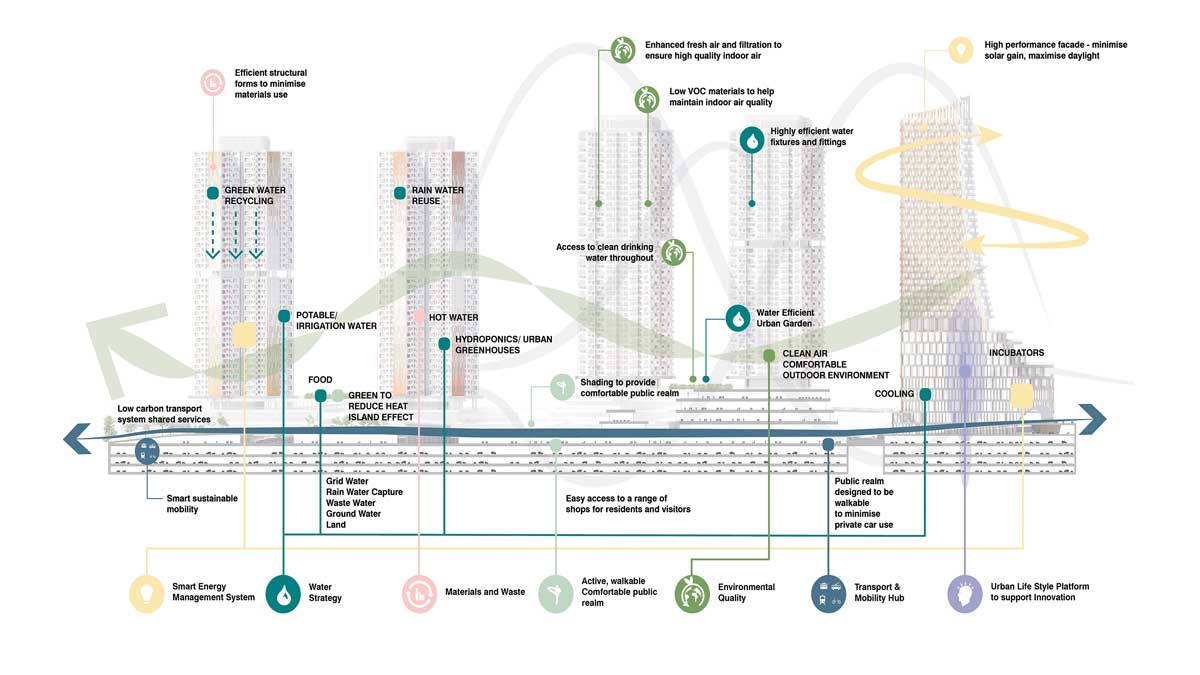
It will be a pedestrian-friendly neighbourhood with spacious streets and nature, where residents have all the conveniences of the city within a 10-minute walk from their homes. As such, Project H1 can serve as a pilot for an adaptable strategy for mixed-use urban developments of the future.
The Masterplan is based on System Design, where certain components can be arranged according to different needs. As such, it incorporates various approaches to flexibility and adaptability across different typologies and scales. This approach of ‘flexible urban density’ enables multi-functional use of public spaces and employs mixed-use organisational models that encourage strong community bonds, while the proposed digital service packages create an unprecedented level of convenience for the residents.
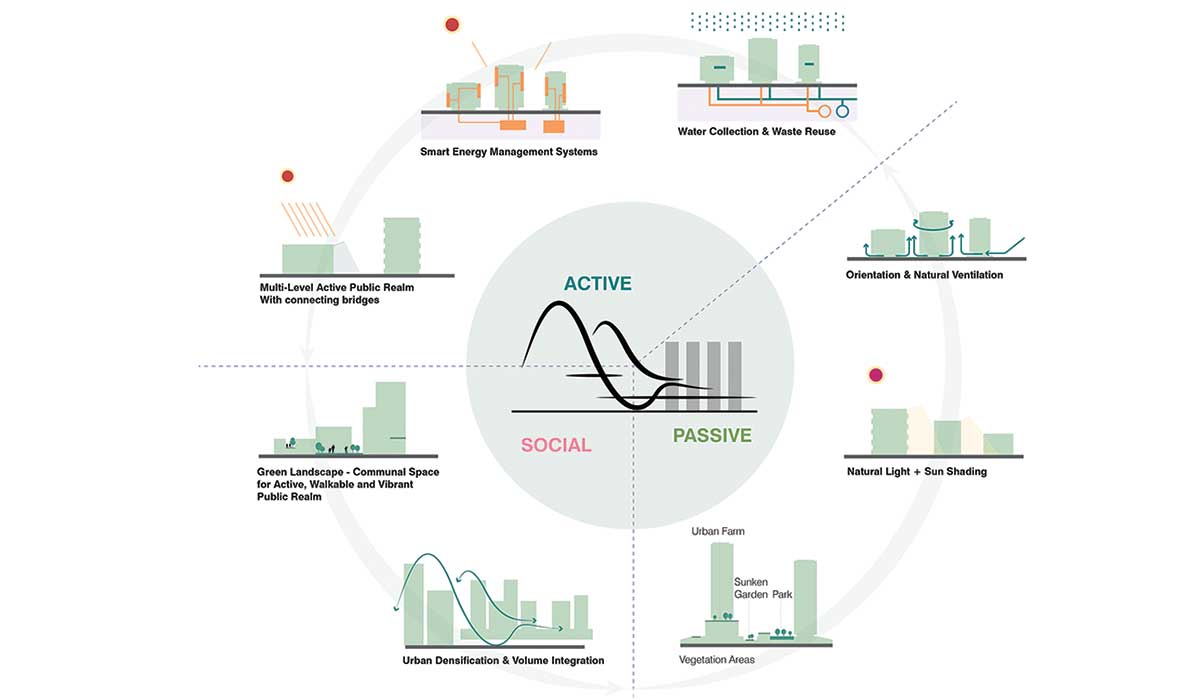
The site is located close to the mountains in the north-east of Seoul. Situated between two existing residential neighbourhoods, it currently forms a barrier and distinct separation between the two. The introduction of a new rail link has created an opportunity to completely revitalise the area, while connecting the two neighbouring developments, as well as nearby stations and parks. The concept for the area design would also be guided by traditional Korean urban planning principles, which typically respond to the surrounding natural landscapes.
A continuity of green space is maintained throughout, while the form of the buildings follows the soft topography of the nearby mountains and visual corridors are created to the mountains and skies beyond.
The programming of the site is divided into two zones of different densities, based on a context-specific, vernacular T-junction grid. These T-junction links are connected to one another by three main squares and a network of smaller plazas, creating social meeting points within the overall layout of the masterplan.
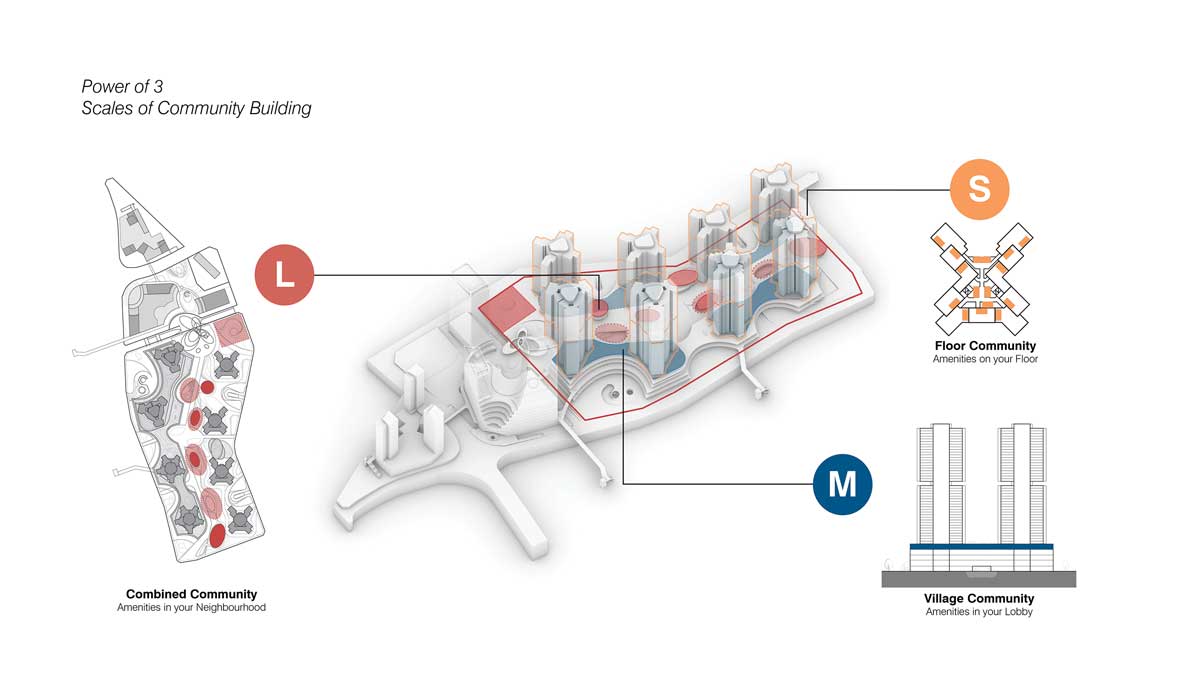
Bridge links are introduced to join the two adjacent residential neighbourhoods and to connect the site with the nearby Jungan stream. Further, bridge and underground connections link the site to the surrounding city at large, while the main street is also revitalised and extended over the new site. Key landscape elements comprise gardens, parks, themed green roofs, and nature zones.
Programming for health focuses on fitness, food and clean energy, with the incorporation of climbing walls, public parks and running tracks, and encouraging people to walk and cycle through the site by excluding cars. Facilities for hydroponics and urban farming are also incorporated as are spaces that encourage learning and creativity such as an ideas hub, a library, and an incubator for new businesses.
In a hybridised world where boundaries between functions are blurring, a network of spaces is created comprised of multi-purpose communal spaces with no fixed programme, discussion ‘salons’, spaces for pop-up events and urban break-out spaces. Further amenities such as leisure, co-working spaces and health services are located on strategic locations throughout the Masterplan.
The larger portion of the masterplan houses a mixed-use plot accommodating 8 residential towers. Increasing ground area, these leisure levels provide spaces for commercial, educational and cultural activities on street-level and on two to three additional levels above. With flowing, curved lines, the height differences of the leisure levels are integrated into the landscape design, creating areas to relax, play and exercise, while the landscape concept is continued up on to the towers in the form of roof gardens.
Running through the mixed-use plot, the retail-based street-mall provides shared ‘third space’ multi-purpose typologies, cinemas, community centre and a kindergarten.
The apartments in the towers propose a new typology, based on the Radial typology. This enables multi-generational and lifecycle housing of different sizes and price classes; flexible, compact, apartments that cater to multiple family and tenant configurations that can change over time.
The co-living, officetel (an office model that combines the features of a house, a hotel and an office), and residential apartments are designed with flexible furniture, including a ‘Living Wall’ system that enables different spatial configurations while housing various smart functions and gadgets.
This new type of vertical living also focuses on reducing loneliness and isolation in high-rises by incorporating shared spaces and joint facilities on each floor. Multi-purpose community spaces are also incorporated on the entrance level of each apartment tower.
The basement levels of the masterplan not only cater to logistics and parking for this car-free neighbourhood, they also house health-related amenities such as a running track and swimming pools.
Connected to the mixed-use area is the new ‘ Commercial Business plot’, situated strategically in the vicinity of 11 universities and next to a train station and future high speed train connection. The programming of this Commercial Business plot consists of a hotel, co-living residences, co-working spaces with pockets for private work, and officetel These programmes are combined with leisure and health facilities and are connected by a Town Plaza. Extended with a sky balcony and roof terraces, the large rooftop creates a visual connection from the station to the site.
A multi-modal mobility-hub services all the transport needs of the people who live and work in H1. Here, mobility experiences based on shared services provide a high level of flexibility, as users can decide on their preferred service package.
In order to cope with the sudden, short and heavy rainfalls in Seoul, most horizontal surfaces in the masterplan are covered with a thick layer of soil and green that captures the large quantities of rainfall, which is then filtered in a water filtration system. Not only can the water be stored and used to irrigate the green landscapes, the planting itself can benefit the bio-diversity on site, whilst combatting the urban heat-island effect with vegetation.
Waste collectors are placed in the basement with designated recycling areas and organic waste is used to develop compost for urban farming.
For the design of the residential component, the aim was to ensure optimal access to daylight and good ventilation. Every residential unit is designed to have sufficient facade length, while balconies with space for pots and planters are introduced.















